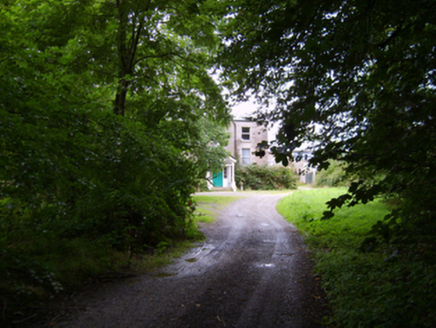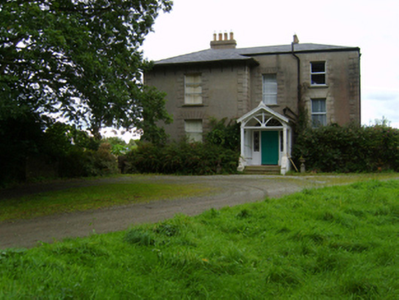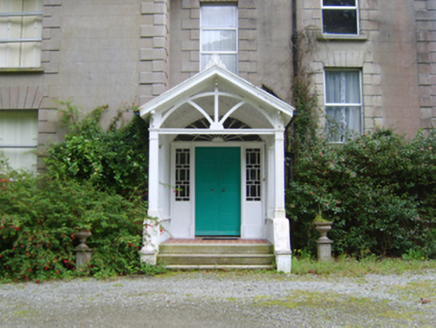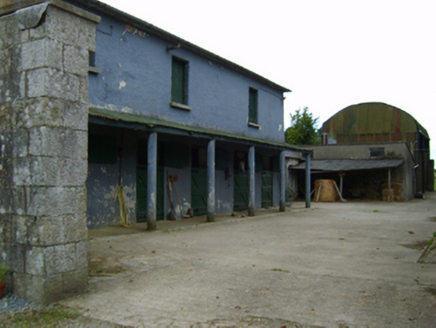Survey Data
Reg No
15702552
Rating
Regional
Categories of Special Interest
Architectural, Artistic, Historical, Social
Original Use
Farm house
Historical Use
School
Date
1842 - 1900
Coordinates
294754, 136364
Date Recorded
20/08/2007
Date Updated
--/--/--
Description
Detached three-bay two- and three-storey split-level farmhouse, extant 1900, on an L-shaped plan centred on single-bay single-storey gabled projecting open porch to ground floor abutting single-bay two-storey advanced end bay; two-bay two-storey (south) or three-bay three-storey (north) elevations. In alternative use, 1905-7. Occupied, 1911. Sold, 1964. Resold, 1968. Refenestrated, ----. Now disused. Hipped slate roof on a quadrangular plan abutting hipped slate roof (west), clay ridge tiles, rendered chimney stacks having paired stringcourses below capping supporting terracotta or yellow terracotta pots, and replacement uPVC rainwater goods on slightly overhanging slate flagged eaves retaining cast-iron downpipes. Part creeper- or ivy-covered rendered, ruled and lined walls with rusticated quoins to corners. Hipped segmental-headed central door opening approached by flight of three cut-granite steps, three quarter-engaged colonettes on plinths supporting shallow cornice, and concealed dressings framing timber panelled double doors having sidelights below fanlight. Square-headed window openings with cut-granite sills, and rendered block-and-start surrounds framing replacement aluminium casement windows. Interior including (ground floor): central hall retaining carved timber surrounds to door openings framing timber panelled doors; and carved timber surrounds to door openings to remainder framing timber panelled doors with timber panelled shutters to window openings. Set in landscaped grounds.
Appraisal
A farmhouse representing an integral component of the nineteenth-century domestic built heritage of County Wexford with the architectural value of the composition, one succeeding an earlier house occupied by Overington Bolton (Lewis 1837 II, 30), suggested by such attributes as the compact plan form centred on a restrained doorcase not only demonstrating good quality workmanship, but also showing a simplified "peacock tail" fanlight; the diminishing in scale of the openings on each floor producing a graduated visual impression; and the slightly oversailing roofline. Having been well maintained, the elementary form and massing survive intact together with substantial quantities of the original fabric, both to the exterior and to the interior where contemporary joinery; chimneypieces; and plasterwork refinements, all highlight the artistic potential of the composition: however, the introduction of replacement fittings to most of the openings has not had a beneficial impact on the character or integrity of the composition. Furthermore, adjacent outbuildings (extant 1903); and a nearby gate lodge (see 15702553), all continue to contribute positively to the group and setting values of a self-contained ensemble having historic connections with Henry Hugo Patrick de Burgh (1868-1900), 'late of Ballinapierce [sic] County Wexford [who was killed in action] at Wepener Orange River Colony South Africa' (Calendars of Wills and Administrations 1900, 115); Edward Armstrong Johnson (1846-1932), author of a translation of "The Rubaiyat of Amar Khayyam" (1887) and "The Possibilities of an Irish Pottery Industry" (1917); and Major Terence Ffolliott Dunne (1917-92).







